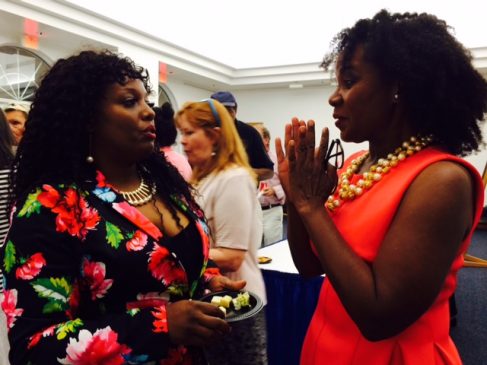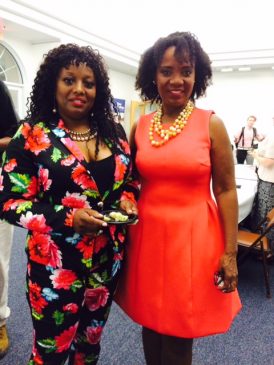
The living history of a community once segregated from Sarasota. That’s what Newtown Alive has preserved – in all its success and struggle – and that’s what the project’s director Vickie Oldham shared with guests from New College and wider Sarasota last week as part of the New Topics series held in the Mildred Sainer Pavilion.
“The history was in fragments, it wasn’t backed by primary or secondary sources and it was never all together,” Oldham said. “The story is not so diluted anymore, you can see it.”
A major part of the Newtown Conservation Historic District (NCHD) initiative, Newtown Alive is the culmination of a year and a half of vigilant research collecting black history and experience unique to the area.
The result of the work: a book composed of 47 oral history interviews with present and former Newtown residents, the establishment of 15 historic landmarks in the area, a timeline, graphic maps, and a website documenting the project as a whole.
At the New Talk presentation, Oldham reached out to one of the interviewees who took part in the project’s oral history phase. Sitting in the audience was Sheila Sanders, who Oldham referred to as a pioneer activist.
The story goes back to the third grade, when Sanders organized her class at Booker to divest their collective savings from a bank that was not allowing the school’s African American student population to tour the bank vault like other, white-majority schools got to do.
“Her name was listed as one of the people that fought in the federal lawsuit against the city of Sarasota to force single member district voting so that blacks could be represented on the city commision,” Oldham said. “So that fact that we have Fredd Atkins, the fact that we have Mayor Shaw, she laid the ground for that.”
The idea of formally documenting Newtown’s monumental history was first realized by former Sarasota mayor and Newtown native Fredd Atkins, who saw how gentrification displaced the early black community from former Overtown, now known as the Rosemary District lying just north of downtown.
“The community is looking at Overtown, where the first African American community settled in Sarasota,” Oldham said. “Now we see barely a trace of that Overtown community.You wouldn’t know that a black community existed there.”
A similar fate is encroaching once again. It is estimated that over 60 percent of real estate in Newtown is owned by absentee owners and speculators, waiting for prices to rise alongside the skyscrapers next door.
This is one reason why the Sarasota Herald-Tribune’s praise for Newtown Alive as “keeping community alive with history” resonates on a deep level for some folks in Newtown.
The work bestowed to Oldham and her taskforce began with a series of five public meetings in Newtown to designate the cornerstones of the community’s history and develop a master list of people and places this past could be rediscovered in.
As NewtownAlive.org notes, the chosen 47 interviewees are “a limited sample compared to the total population of Newtown, but with the guidance of the Newtown Citizen Historic Task Force, a variety of people of different ages, social backgrounds and professions provided a broad perspective.”
The team unveiled Newtown’s historical markers back in February at the Robert L. Taylor Community Complex, a historical monument itself – honoring its namesake for decades of dedicated service to the Newtown community. Several New College students volunteered to help set up for the event.
“New College has a history with Newtown – there’s not an article you can read about the Booker Boycott in which New College is not mentioned working with those freedom schools,” Oldham said, to which I asked how New College students can develop close relationships with the community again. “Programs like this and any opportunities to volunteer with projects,” she replied. “Just be more visible.”

Students taking Professor of Archaeology Uzi Baram’s Historical Archaeology course are getting a chance to do just that.
A section of class that is novel to this semester is the creation of a community research program. Starting in Mod two, New College students will design an archeology project based on local black history and, if all goes well, the project will collaborate with Booker students to do excavations around Newtown and the Rosemary District.
“My approach is – I don’t have the answers,” Baram said. “It’s all out there and I’m going to struggle with them to figure out how to do this. After we come up with a research design and fundamental questions to make it a valid endeavor, then we work with community members and we shift to meet community needs. So it’s going to be very much a process.”
One student in the class, third-year Hayley Trejo, is focusing their work on filmography and how to apply those skills in the Newtown community. Another student is interested in an architectural study on the plethora of churches in the area.
“Archeology is very much in the public eye,” Professor of Archeology Uzi Baram said. “And I always invite the public to come, and they come in numbers! So it becomes this stage to talk about not just what archeology is but why we’re engaging in the work for the meaning and the history.”
